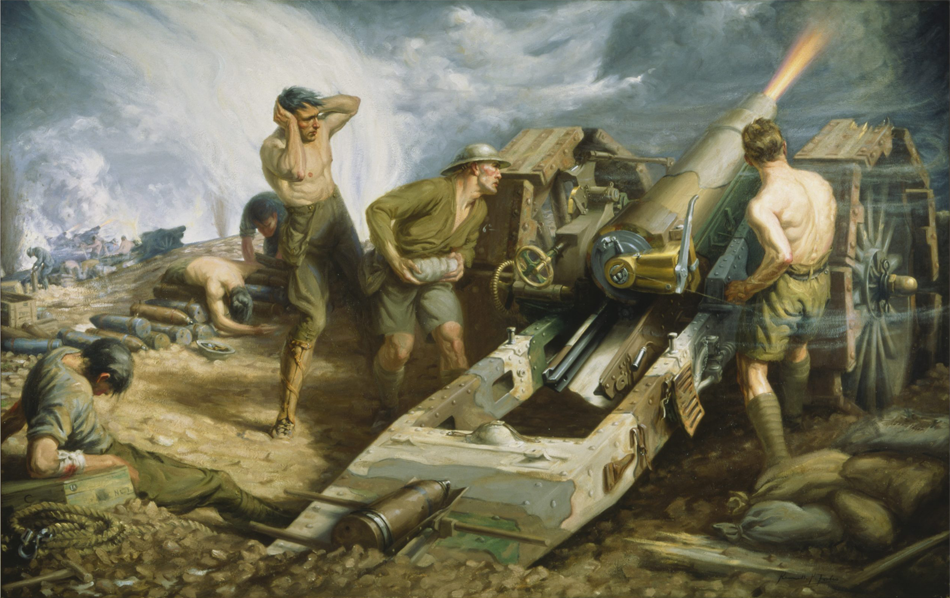Remembering War
As the First World War drew to a close, members of the Imperial Order of the Daughters of the Empire (IODE), a patriotic Canadian women's organization, sought a memorial, other than a traditional monument, to be their tribute to “the fallen of Empire.” At their annual meeting in 1919 they adopted a plan to present copies of paintings by Canadian or British artists to schools “in the hope that rising generations would come to abhor the method of settling international disputes by mortal combat.” Art provides a unique look at the war experience because it represents the artist's visual interpretation of his or her surroundings. Paintings can suggest the emotions and sensations that the painter was feeling at the time, and may evoke feelings in the viewer as well. Art is also subjective, and the original intent of the artist is not always clear to the viewer. Some schools refused these prints, arguing that they in fact glorified war.
The Defence of Sanctuary Wood, by Kenneth Forbes
In June of 1916 at Sanctuary Wood, soldiers of the Princess Patricia's Canadian Light Infantry were trapped in an exposed position and decimated by enemy fire. Of the units ordered to reinforce the regiment, only the 49th Battalion, under the command of Lieutenant-Colonel William Griesbach, arrived in time. Acting alone, the 49th successfully relieved the Patricias. This print of an original painting of the defence of Sanctuary Wood, vividly portrays the almost surreal qualities of the First World War battlefield. Several soldiers man their machine guns and return fire against a not-too-distant enemy. Some attend comrades who have fallen during the furious fighting. Others, who have not survived, await stretchers to take them on to casualty stations. The battlefield, once dense forest, had been reduced to charred tree stumps.
Canadian Artillery in Action, by Kenneth Forbes
This print of an original painting by Kenneth Forbes in 1918 shows a Canadian six-inch howitzer supporting British troops in the attack on Thiepval on 16 July 1916 during the Battle of the Somme.
Forbes had been in the front line trenches for over two years and was wounded twice and gassed. In an interview, he remarked that artillery officers helped him ensure the accuracy portrayed in this work.
Monuments
The war left many communities struck by loss almost everyone lost a family member of someone they knew. Red Cross Societies, Women's Institutes, Masons, Odd Fellows and other service groups contributed to the building of monuments large and small across Lambton County.
Unveiling of the Soldiers' Memorial, Petrolia, 1922
Major Charles Fairbank unveiled the solemn granite soldier next to Petrolia's town hall in September 1922. On a bright September day, the Names of the Fallen, 54 men from Petrolia and Enniskillen Township were read aloud.
By Little Towns: The War Memorials of Lambton County
In 1978, Robert Shipley and the Lambton Heritage Museum collaborated on a book that documented Lambton's war memorials. Family, friends and researchers can search the names of soldiers who died in service and are written on these memorials through the Lambton County Archives.







 Subscribe to this page
Subscribe to this page